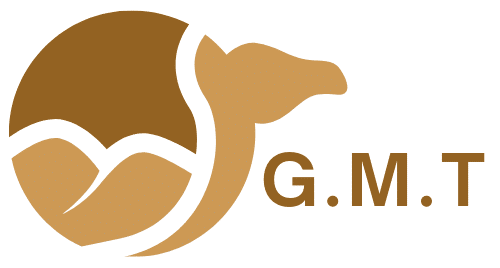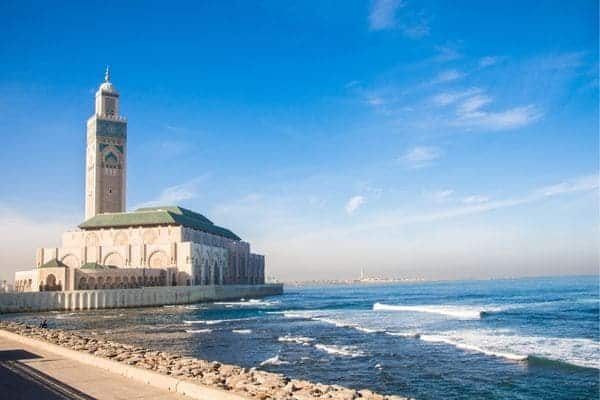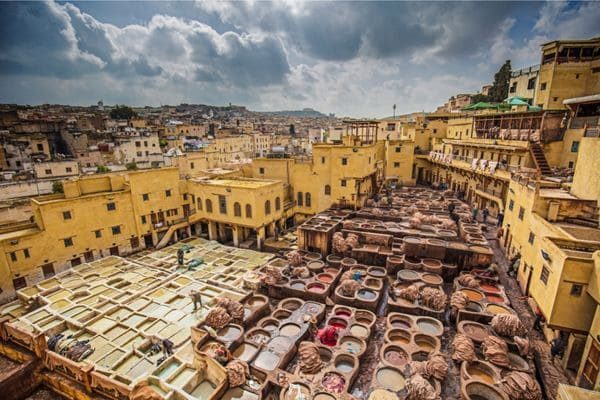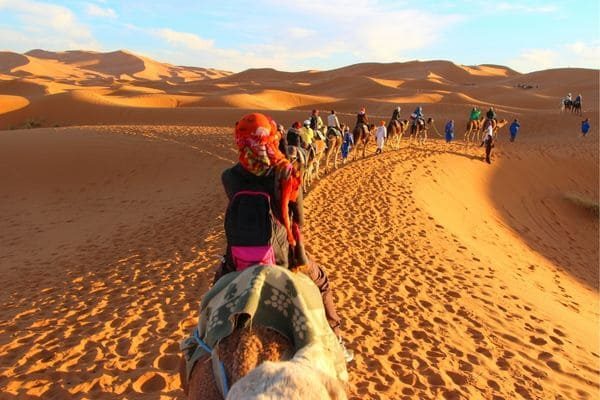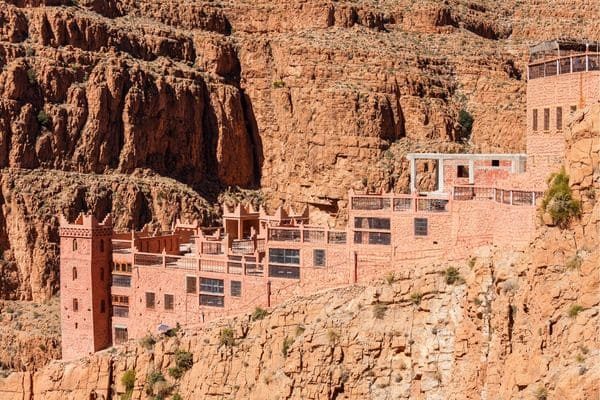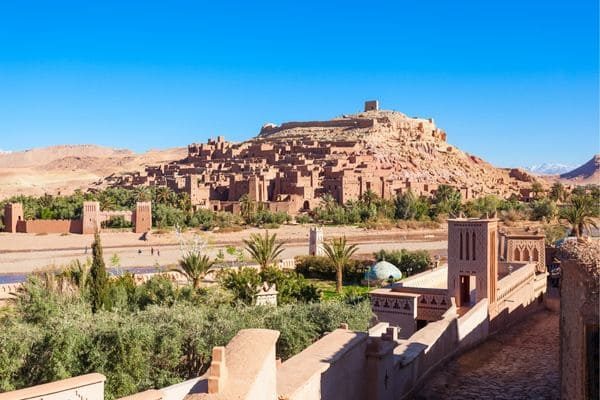Best 7-day tour from marrakech
Overview:
If you’re looking for the best 7-day tour from Marrakech, we have the perfect trip for you. In one week, you’ll get to explore some of Morocco’s most beautiful places, from the lively streets of Marrakech to the peaceful Sahara Desert and the stunning Blue City of Chefchaouen.
This tour will take you through Morocco’s unique landscapes, from the towering Atlas Mountains to the huge desert, all while experiencing the country’s rich culture and history. You’ll visit traditional Berber villages, historic towns, and some of Morocco’s most famous landmarks.
Highlights:
- Atlas Mountains Adventure:
- Explore Ait Ben Haddou and ouarzazate
- visit rose valley
- visit dades valley and todgha gorge
- Enjoy a peaceful camel ride through the golden dunes of the Sahara Desert, followed by a night under the stars in a desert camp.
- Discover the Erg Chebbi dunes,
- explore Historic Fes
- visit Roman Ruins of Volubilis
- Explore the picturesque blue streets of Chefchaouen
- Visit the capital city, Rabat, and the impressive Hassan II Mosque in Casablanca, one of the largest mosques in the world.
Informations:
- Place to begin: your riad/hotel in marrakech
- Place to end: your riad/hotel in casablanca
- Period: 7 days/ 6 nights
- Departure time: 8/9 am
THIS IS THE ITINERARY OF THE 7-day tour from marrakech:
Day1: marrakech– high mountains–ait ben haddou- ouarzazate- dades valley
We start our tour by leaving Marrakech and heading towards the beautiful Atlas Mountains. Along the way, we stop at a Berber village to learn about the local way of life. After that, we drive through the Tizi n’Tichka pass, a scenic mountain road that offers amazing views. On the way, we’ll visit a women’s cooperative that produces Argan oil. Here, you’ll have the chance to learn about the process of making this famous Moroccan oil
Our next stop is Ait Ben Haddou, a famous ancient town where many movies have been filmed. Here, we’ll have lunch and explore the historic buildings. From there, we continue to Ouarzazate, known for its film studios, before visiting Skoura and the Rose Valley, where rose products are made. By evening, we’ll arrive in the Dades Valley, where we’ll spend the night surrounded by beautiful landscapes.
Day2: dades valley-todgha gorge-arfoud-sahara desert
After breakfast, we drive through the stunning Dades Valley, passing through the Tisadrine pass and the unique “Monkey Fingers” rock formations. Our journey continues to Todgha Gorge, a deep canyon with high cliffs, where we’ll take a short walk and enjoy the views.
For lunch, we stop in the town of Tinjdad before heading to a Berber village where you can try henna tattoos and dress in traditional Berber clothes. Later, we travel through the desert landscapes, passing by a water channel and the town of Arfoud, known for its fossils. By late afternoon, we’ll arrive at the Sahara Desert. You’ll enjoy a camel ride through the golden dunes before spending the night in a desert camp under the stars.
Day3: Exploring the Sahara Desert of erg chebbi
We spend the entire day discovering the magic of the Sahara Desert. We’ll start by exploring the impressive Erg Chebbi dunes, followed by a visit to a nomad family who lives in the desert. After learning about their lifestyle, we visit the old mines in Mfis, and then the village of Khamlia, where you can listen to traditional Gnawa music.
For lunch, we’ll enjoy a special Berber pizza in Khamlia before visiting Merzouga Lake, an oasis in the desert. In the afternoon, we visit the palm groves and the water channels in the village of Hassi Labied. Later, we return to a desert hotel where you can rest or enjoy some activities before spending the night.
DAY4: sahara desert-ziz valley-cedar forest-ifran-ifran
We will leave the desert and begin our journey north towards Fes. On the way, we’ll pass through the Ziz Valley, which is famous for its palm trees and date farms. We stop for lunch in the town of Midelt before continuing through the Middle Atlas Mountains. Along the way, we’ll visit the cedar forests of Azrou, where you may see some wild monkeys.
Next, we stop in the town of Ifrane, often called the “Switzerland of Morocco” for its European style architecture and cleanliness. By evening, we arrive in Fes, where you’ll stay in a beautiful traditional riad.
Day5: FES DAY SIGTHSEEING
Fes is one of Morocco’s oldest and most interesting cities, and today you’ll have a full day to explore it. We’ll begin with a visit to the Royal Palace gates, then head into the ancient medina (old city) of Fes. Here, you’ll walk through narrow alleyways filled with shops, historic buildings, and local craftsmen.
We’ll visit famous sites such as the Al Quaraouine University, one of the oldest universities in the world, and the colorful Tanneries, where leather is dyed using traditional methods. After lunch, we explore Fes El Bali, the oldest part of the city and a UNESCO World Heritage site. By evening, you’ll return to your riad for a relaxing night.
day6: Fes-volubilis- Chefchaouen
We will leave Fes and head towards Chefchaouen, the famous Blue City of Morocco. On the way, we stop at the ancient Roman ruins of Volubilis, a fascinating archaeological site. After exploring the ruins, we continue our drive through the Rif Mountains, where we’ll stop for lunch.
By the afternoon, we arrive in Chefchaouen, a charming town known for its blue-painted streets and buildings. You’ll have time to walk through the medina and enjoy the sunset from the Spanish Mosque, which offers panoramic views of the city. We’ll spend the night in a local hotel or riad.
Day 7: Chefchaouen-rabat-Casablanca
On our last day, we will spend the morning exploring Chefchaouen. You can wander through the medina, visit a small waterfall just outside the city, and even try on traditional Rif clothing. After lunch, we begin our journey towards Casablanca.
On the way, we’ll stop in Rabat, the capital of Morocco, where we visit the Hassan Tower, a historic minaret. Finally, we arrive in Casablanca, where you can visit the stunning Hassan II Mosque before we drop you off at your hotel or the airport, marking the end of our 7 day adventure.
details:
- pick up and drop-off at your hotel/riad
- our A/C modern 4x4 or van/minivan.
- drivers/guides speaking English....
- clean vehicle A/C with air condition along the way
- visit some interesting place along the way
- fuel
- 6 nights at hotel/riad with "dinner&breakfast"
- sunset camel ride in sahara desert erg chebbi
- overnight at private luxury tent on sahara desert erg chebbi camp
- lunches, drinks
- entrance the monuments
- personal expenses
- local guids in any
KNOW BEFORE YOU GO
What to Pack
- Clothing: Pack light, comfortable clothes for both warm and cooler weather. Morocco has different climates warm in the desert but cooler in the mountains, especially at night. Bring a jacket or sweater for the evenings.
- Shoes: Comfortable walking shoes or sneakers are a must, especially for walking in cities, mountains, and the desert.
- Sun Protection: The Moroccan sun can be strong, so don’t forget sunglasses, a hat, and sunscreen to protect yourself from the sun.
Money
- Currency: The local currency is the Moroccan Dirham (MAD). You’ll need cash for local markets, small shops, and tipping. There are ATMs in cities, but it’s a good idea to carry some local cash, especially in village areas.
- Tipping: Tipping is common in Morocco. It’s appreciated in restaurants, for guides, and drivers.
Health and Safety
- Water: It’s best to drink bottled water during your trip. You can buy bottled water almost everywhere.
- Food: Moroccan food is delicious, but if you have a sensitive stomach, be cautious with street food or dishes you’re unfamiliar with. Stick to cooked food and avoid uncooked items like salads if you’re worried about water quality.
- Health: No special vaccinations are required for Morocco, but it’s a good idea to bring basic medications like painkillers, antihistamines, and anything for upset stomachs.
Travel Essentials
- Documents: Make sure your passport is valid for at least six months from your arrival date. Keep copies of your passport and travel insurance just in case.
- Language: The main languages spoken are Arabic and Tamazight, French, but you’ll find many people in the tourist areas speak English. Learning a few basic words like “hello” (salaam) and “thank you” (shukran) is always appreciated by locals.
- Phone and Internet: Morocco has good internet coverage in cities, and many hotels offer free Wi-Fi. You may want to get a local SIM card if you need data while traveling.
Cultural Etiquette
- Dress Respectfully: Morocco is a Muslim country, so it’s important to dress modestly, especially in rural areas and religious sites. Women should cover their shoulders and knees, and men should avoid wearing sleeveless shirts.
- Greetings: A handshake or a simple “hello” is a common greeting. In some cases, close friends greet each other with a kiss on each cheek, but this isn’t expected for tourists.
- Photography: Always ask before taking photos of people, especially in local markets or village areas. Some may feel uncomfortable with photos, so it’s respectful to get permission first.
Time
- Punctuality: In Morocco, things tend to run on “Moroccan time,” meaning they can be a little flexible. Be patient if things don’t happen exactly on schedule.
Weather
- Seasonal Info: Morocco can get very hot in summer, especially in the desert, so be prepared if you’re traveling between June and August. The best time to travel is in spring or autumn when the weather is milder.
Frequently Asked Questions
1. What clothes should I bring?
Bring comfortable clothes for warm days and cooler nights. It’s good to have a jacket or sweater for the evening. Don’t forget comfortable shoes, a hat, sunglasses, and sunscreen to protect yourself from the sun.
2. Is the camel ride safe?
the camel ride is safe. The camels are calm, and experienced guides will help you. If you’re nervous or need help, just let your guide know.
3. Can children join the tour?
children can join the tour. They will enjoy fun activities like camel rides and exploring the desert. Keep in mind there will be some time spent traveling in the car, so plan some snacks or things to keep them entertained.
4. Where will we stay?
You will stay in a mix of nice hotels, traditional Moroccan guesthouses (called riads), and a desert camp in the Sahara. The places are safe and comfortable. Staying in the desert camp is a special experience, with tents under the stars.
5. Is food included?
Breakfast and some dinners are included in the tour. You will need to pay for lunches and a few dinners on your own, but we will take you to good, affordable places to try Moroccan food.
6. Can I use a credit card in Morocco?
In big cities, you can use credit cards in some places, but it’s best to have cash. You can get Moroccan Dirhams (MAD) from ATMs, or exchange money at the airport or in the city.
7. How long will we drive each day?
We will drive for a few hours on some days, especially when traveling between cities. Don’t worry, we will stop often at interesting places so you can rest and explore.
8. When is the best time to go on this tour?
The best time to go is in spring (March to May) or autumn (September to November), when the weather is not too hot or cold. Summer can be very hot, especially in the desert, and winter can be chilly at night.
9. Do I need a visa to visit Morocco?
Most travelers from countries like the U.S., Canada, and the EU do not need a visa for stays of up to 90 days. It’s always a good idea to check with your local Moroccan embassy before traveling to make sure.
10. Is Morocco safe for tourists?
Morocco is generally safe for tourists. Like anywhere, it’s important to stay aware of your surroundings and keep your belongings safe, especially in busy places like markets. Our guides will ensure you feel comfortable throughout the tour.
11. Can I charge my phone during the trip?
you will be able to charge your phone in the hotels and riads where you stay. The plugs in Morocco are the same as in Europe (two round pins), so if you’re coming from another country, you might need a travel adapter.
12. Will we have a guide during the whole trip?
you will have a friendly, experienced guide with you for the entire tour. They will help explain the places you visit and answer any questions you may have about Morocco.
13. What language do people speak in Morocco?
The main languages spoken are Arabic and Tamazight, French, but many people in tourist areas also speak English. Don’t worry, your guide will be able to help with any language barriers.
14. What if I have special food needs?
If you have any special dietary requirements, like being vegetarian or gluten-free, let us know in advance, and we will do our best to accommodate you. Many restaurants offer vegetarian options, and Moroccan food is very flexible.
15. How big are the tour groups?
We like to keep our groups small so that everyone can enjoy a more personal experience. Group sizes are usually around 6 to 12 people, making it easier to connect with your guide and fellow travelers.
16. What kind of activities can I do in the desert?
In the desert, you can enjoy camel rides, sandboarding, and stargazing at night. There may also be options for quad biking or 4×4 driving, depending on the camp. Ask your guide about extra activities.
